Brilliant Beamish!
Posted by Chris Graham on 2nd June 2023
David Reed reports from the wonderful, two-day steam gala which took place recently at Beamish, The Living Museum of the North.
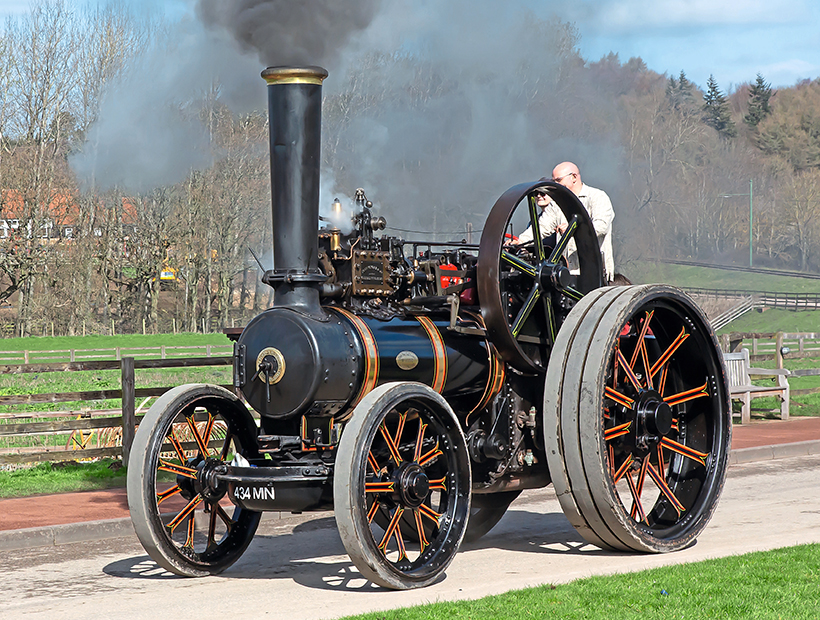
Beamish Steam Gala: Great to see in the UK Mark Wedgewood’s 1907 Fowler general purpose engine No. 11352. Roland had been brought over from the Isle of Man the day before the event.
Starting the rally season off in style was Beamish’s two-day steam gala, that took place at the world-famous open-air museum near Stanley, in County Durham, at the beginning of April. This year’s event attracted a record crowd, with particularly high numbers visiting on Sunday.
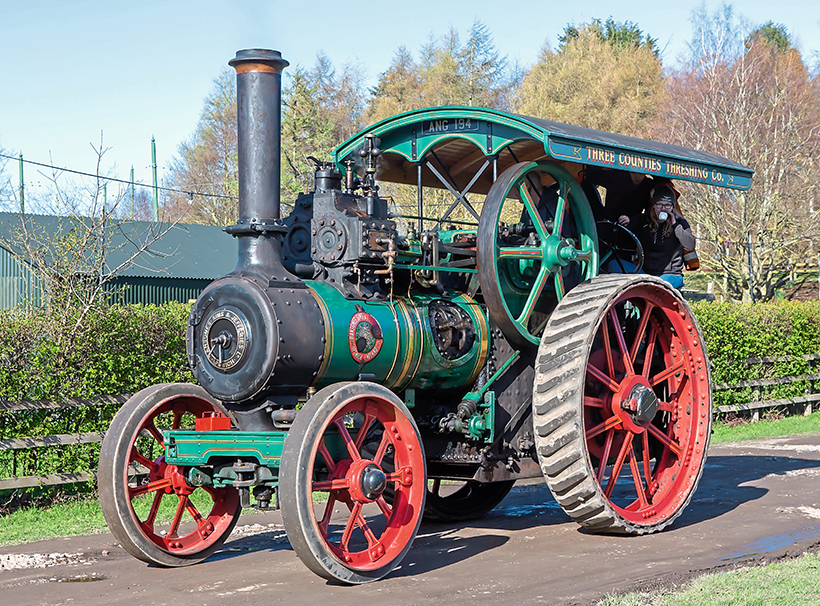
1932 Ransomes Sims & Jefferies 6hp GP engine No. 42035 Vernon was the last Ransomes compound ever built. It previously carried the name Alicia Rose and is seen here heading back to the coal yard at Beamish.
In typical Beamish style, there were a number of locations with a more industrial feel – such as the colliery, pit village and station coal-yard – where engines could be seen simmering quietly; all very reminiscent of how things would have looked a century ago.
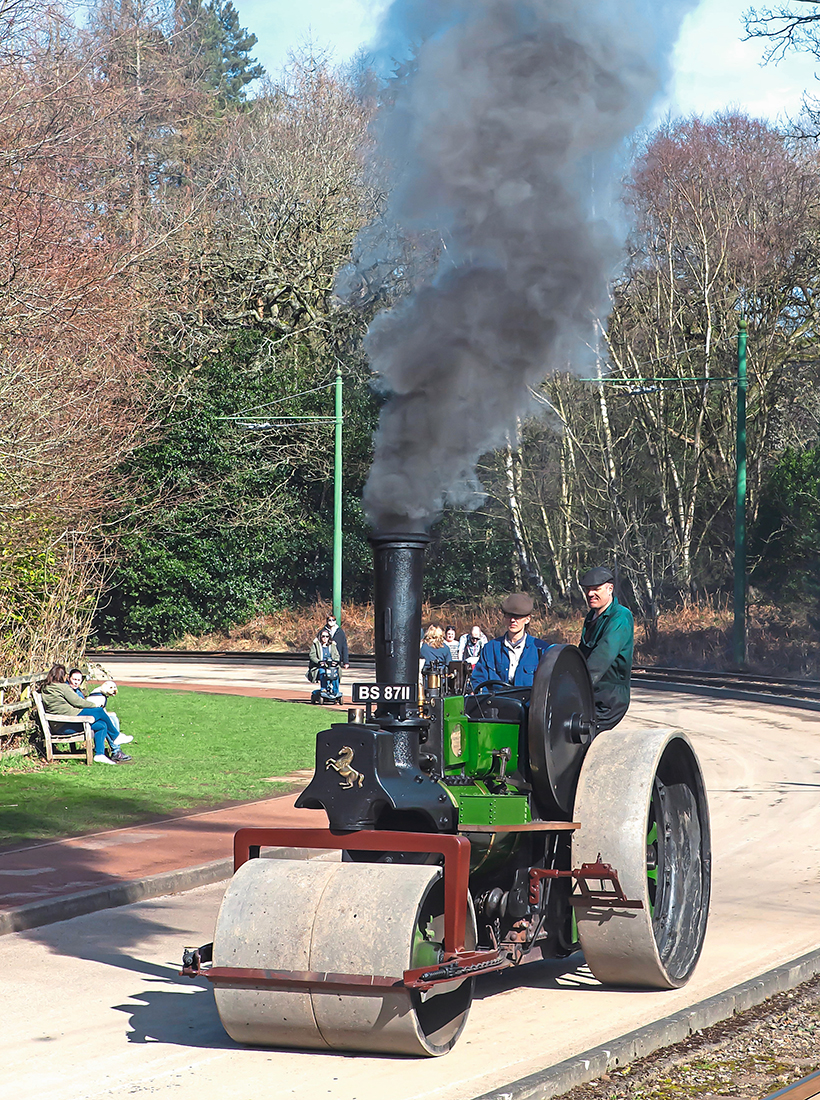
Seen working hard climbing Pockerley Bank at Beamish was David Bickerdike’s 1904 Aveling & Porter R6 road roller No. 5499, that spent its working life in Germany.
Vehicles were also running around the museum’s roads on a regular basis, and the first I spotted was the only McLaren on display this year, Mick Gaines-Burrill’s 1908 6hp No. 1012 road locomotive Mick’s Mac. It worked in New Zealand before being dumped in a river, in around 1940, to stabilise the bank. And there it stayed until the 1970s when it was found, dug out and returned to the UK by Mick with a full restoration following.
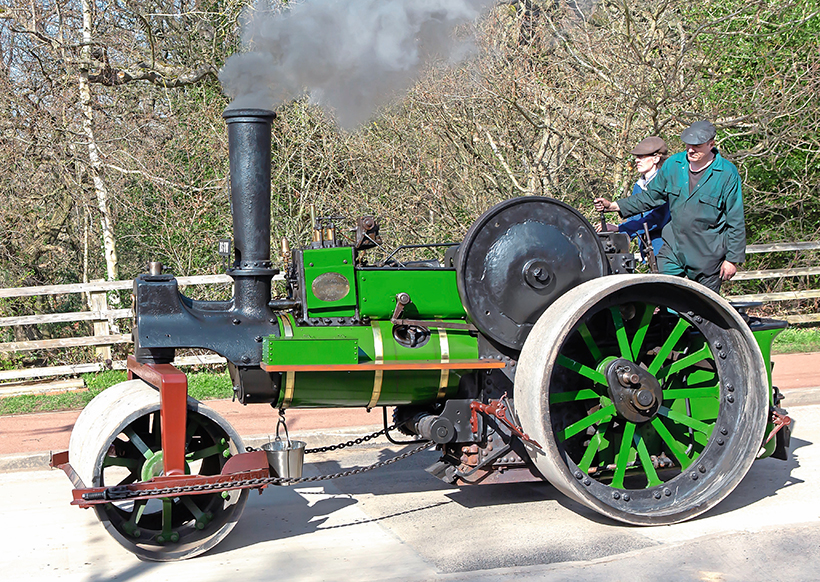
David Bickerdike’s 1904 Aveling & Porter R6 roller No. 5499 is seen running alongside the tram tracks.
As would be expected, the Fowler name was well represented, with 1907 Fowler 6hp GP No. 11352 Roland getting lots of attention. This engine passed to Chris and Mark Wedgwood on the Isle of Man in 2014. It spent its working life in Australia, and returned to the UK in 2007, being imported by a Scottish enthusiast who had major boiler work carried out. After moving to the IoM, a major overhaul took place, with the Fowler being assigned the registration number 434 MN to confirm its Manx credentials. It was great to see this engine at Beamish, especially as it had travelled from the IoM the day before the event.
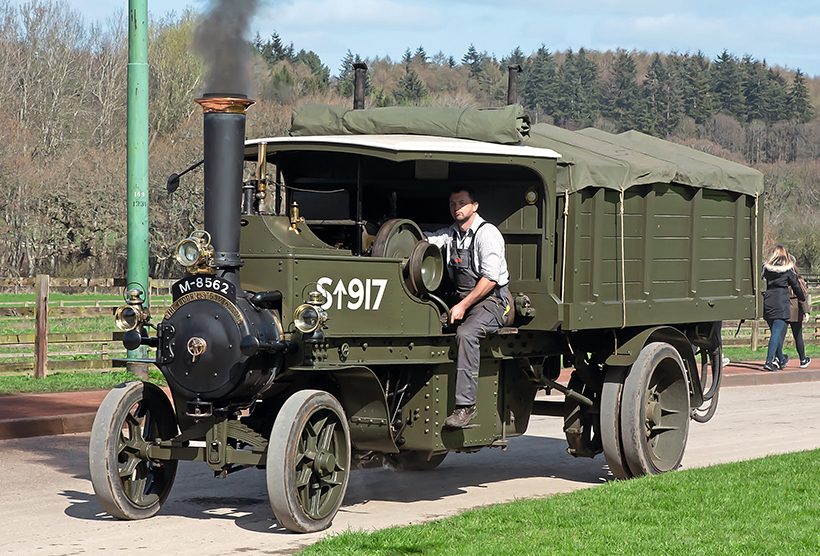
Looking a fine sight on the roads around Beamish was Michael Wilkinson’s 1916 Foden 5-ton tipper No 7768.
Catching the eye, as usual, was new build 925 Fowler B6 road locomotive No. 16263 Talisman, that’s been completely recreated from a kit of old and new parts using the original specifications. Also packing in the power was 1917 ‘Russian’ Fowler 8hp R3 road loco No. 14893 Midnight. It was built in May 1917 for the Ministry of Munitions as an order destined for Russia, but was never sent because of the revolution there. Instead, it worked in the UK and, after a few owners in preservation, it passed to Edward Wright of Willington, County Durham, in 2010.

Mick Gaines-Burrill’s 1908 McLaren road loco No. 1012 takes to the roads at Beamish.
The 1925 Fowler 10-ton roller No. 16615 was also to be admired, which was with W Bland of Gosforth from the 1930s to the 1950s, before being operated by Gosforth Council until 1964. It was presented to Beamish by The Tyne Industrial Archaeology Group in 1970, with restoration being carried out by apprentices from the Swan Hunter Group, with help from volunteers.

Here’s Edward Wright’s 1917 Fowler 8hp road locomotive No. 14893 Midnight. It’s being followed by a 1905 Star, one of the many vintage cars that were seen at Beamish during the event.
Making the trip down from Scotland was the only showman’s road locomotive at the event, namely the Cook family’s superb 1905 Fowler R1 No 9393 Sir John Fowler. Its early years weren’t spent on the fairgrounds. though. Initially it was used by the Lalonde Bros. & Barham of Weston-super-Mare, Somerset, who were long-distance furniture removers. It did pass into ‘showland’ in 1921, firstly with Anderton & Rowland of Bristol, but it only worked for them sporadically until 1926 when it was put up for sale. It came to the attention of showman Jimmy Noyce who persuaded his friend, Jim Seward, to buy the Fowler and let him rent it. Then, in 1941, it went into storage at Seward’s in Petersfield for many years, before being sold into preservation in 1969. It has undergone a fine restoration in the Cooks’ hands, and was seen by many for the first time at this event.

In the 1900s town with its trailer loaded with tree trunks is the Webb family’s 1932 Foden D Type timber tractor No. 14078 Mighty Atom.
Also with a Scottish connection was 1926 Garrett compound steam wagon No. 34932, that was originally bought in 1926 by William Aitken Haulage Contractors of Linlithgow, although they were unhappy with the wagon and returned it to Garrett’s six months later. It ended up with Devon CC in the late 1950s, and was later exported to Toronto, Canada, before being brought back to the UK by the Brown family of Ladybank, in Scotland.

Running alongside 1925 Aveling & Porter D piston-valve road roller No. 11145 Ayesha is Blackpool No 31 tram that was built in 1901 by the Midland Railway Carriage and Wagon Co. Ltd.
There were a couple of other steam wagons on display at Beamish, too. The first was 1917 Foden 5-ton tipper No 7768 that was part of Michael Wilkinson’s collection. This wagon was built for the War Department and was sent to France to build roads behind the front lines during WWI. And in France it stayed, firstly with Blacks who were chicory merchants of Route d’Arras at Cambrai Nord and, later, with the Leroux Company who used it from 1925 to 1948 to make trips from the factory to the station. It was rescued from a scrap dealer for preservation in 1955, after which it stood for 20 years until it was eventually spotted and bought, being repatriated to the UK in 1975.
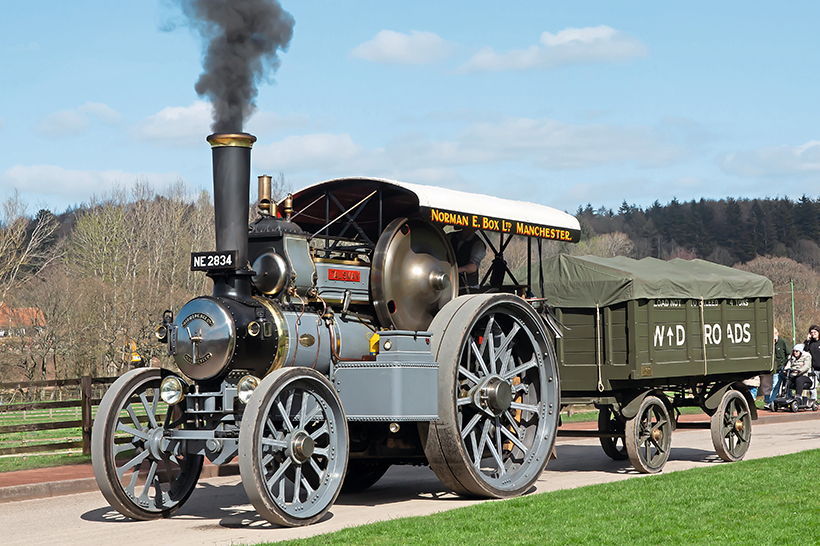
Seen on the museum road was 1925 Fowler B6 road locomotive No. 16263 Talisman. Here it’s pulling the trailer from Michael Wilkinson’s 1916 Foden tipper No. 7768.
Equally impressive was the Webb family’s 1932 Foden D Type timber tractor No. 14078 Mighty Atom, which was new to Astell Brothers from Bedford before moving to the fairgrounds with West Country showman Percy Coles and family. Preservation came about in 1952, with the Foden once again wearing the livery of its original owners. The Foden drew a lot of attention, and was seen hauling a trailer loaded with tree trunks around the museum’s roadways; an impressive sight, indeed!
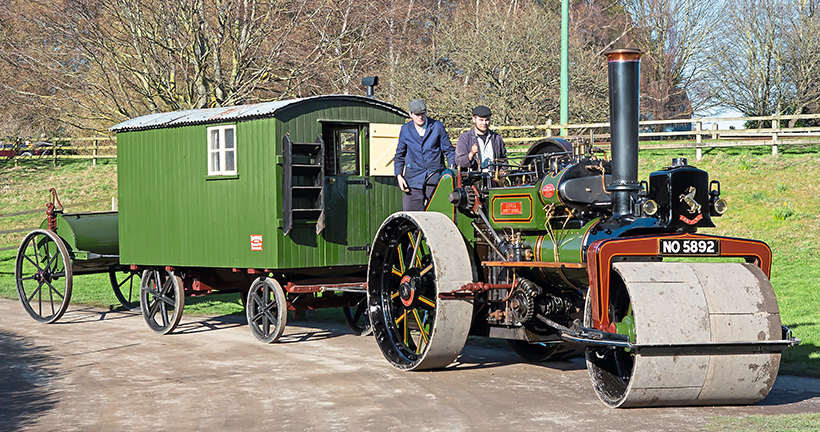
James West’s 1922 Aveling & Porter Class F compound 6hp road roller No. 10346 Buster was seen on the main street at Beamish, outside the Co-op. It was the first time that it had attended a rally in England for more than 20 years.
Moving on to a couple of general-purpose engines, 1932 Ransomes Sims & Jefferies 6hp GP engine No. 42035 was a popular exhibit. Now named Vernon, this was the last Ransomes compound engine ever built, and was sold to an agricultural dealer before moving into preservation in the early 1960s. A regular on the rally field for many years, this engine is possibly remembered by many as Alicia Rose, before its new name was adopted. Then came Michael Davison’s 1889 Marshall No. 17134 Mary Margaret, which turned out to be the oldest engine at this event.

Seen near the coal yard at the end of the event was 1926 Garrett superheated steam wagon No. 34932, ready for the trip home.
However, this wasn’t the only engine entered by Michael Davison, with PT 1034, a 1923 Armstrong Whitworth 12-ton roller 10R11 Albert also having a local feel. This roller had worked for Bishop Auckland Council until 1960, when it moved to Cumbria and then on to Northumberland in preservation. It wasn’t rallied until it returned to County Durham in 2018. The engine had major boiler work and lots more, all before being purchased by the current owner.
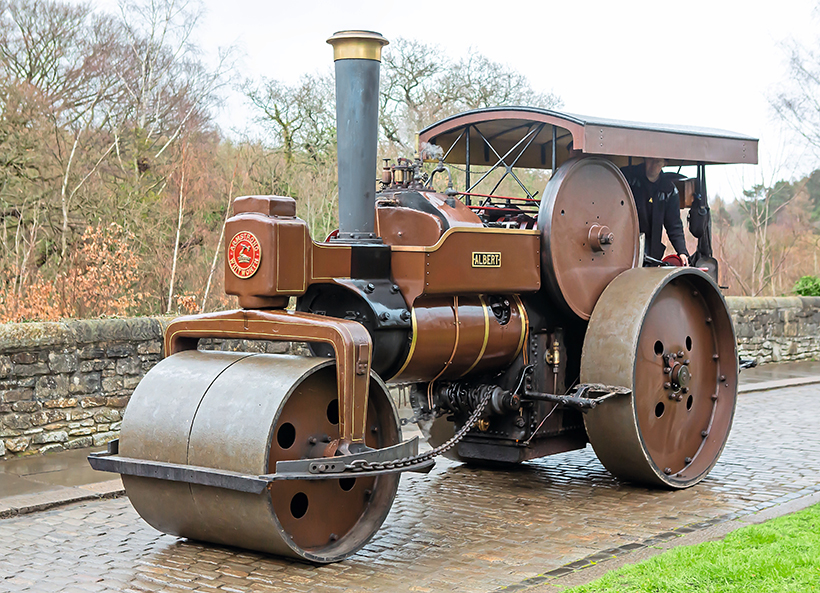
Heading back to the coal yard was Michael Davison’s 1923 Armstrong Whitworth 5hp roller No 12R11 Albert that had worked in the North of England during its life.
The Aveling & Porter name was well represented at Beamish, with rollers unsurprisingly dominating proceedings. However, Brian Allison had his 1927 L type tractor here, No. 11839 Oberon, that was supplied new to Dumfries County Council for hauling road stone. It was based at Lockerbie depot, later passing to JM Crowther in 1958, who restored it. The engine moved on to Brian in 1983, and has since been completely rebuilt, including a new firebox, barrel and tubes.

Spotted in the colliery was Andrew Cook’s 1923 Aveling & Porter E type roller No. 10707 Pegasus that was new to Crook Urban District Council, passing into preservation in 1962.
David Bickerdike’s 1904 A&P R6 No. 5499 road roller found employment on the continent and worked near Nuremburg. The roller was repatriated from Germany in around 2009, and has had a full restoration which took 10 years to complete.
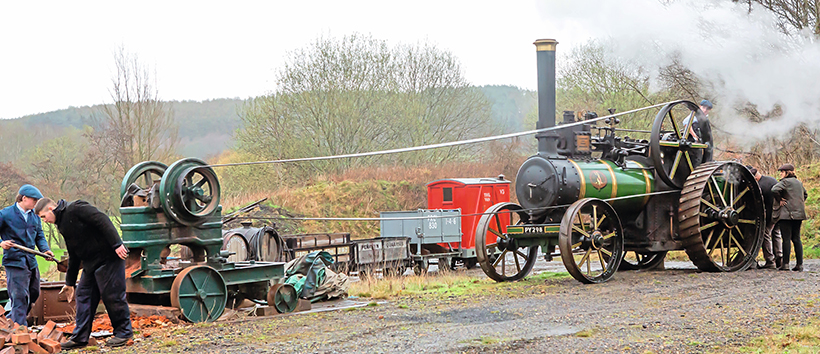
Being put to work in the colliery area we see 1889 Marshall 8hp single-cylinder GP engine No. 17134 Mary Margaret, operating a brick crusher.
Another north-east engine was Andrew Cook’s E type roller No. 10707 Pegasus, that was new to Crook Urban District Council, being ordered at the beginning of July 1923 and delivered by the end of the month that year. It entered preservation in 1962, while 1925 Aveling & Porter D road roller No. 11145 Ayesha was new to CS Bunch of Jesmond, Newcastle and was used by them until the 1960s.
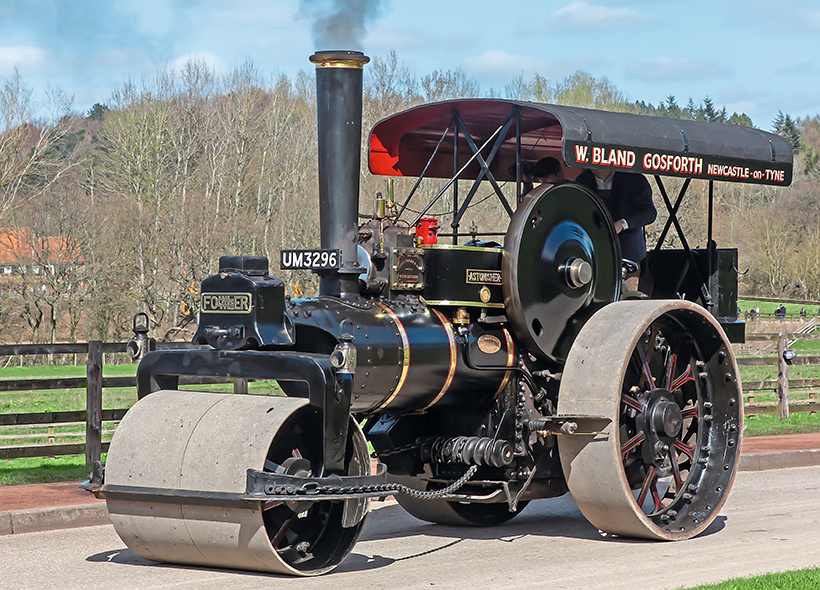
Seen on the road was 1925 Fowler 10-ton single cylinder roller No. 16615, before the climb up Pockerley Bank.
But for many, the star of the show was James West’s newly-restored 1922 Aveling & Porter Class F compound 6hp road roller No. 10346. This roller was new to Essex County Council in September 1922 and was based at Ongar, being sold by them in 1961 and passing into preservation in 1965. Although it’s been frequently identified as being named Gladstone, apparently it never carried the name, but did display the name Buster for many years, as it was always breaking down! The Aveling was acquired by James West of Aberdeen who restored it with a new barrel, tube plate and doing extensive welding repairs to what was left. The restoration process, which included the caravan and water cart, was completed just in time for the event at Beamish. “This is the first rally that Buster has attended in England for over 20 years,” he said.
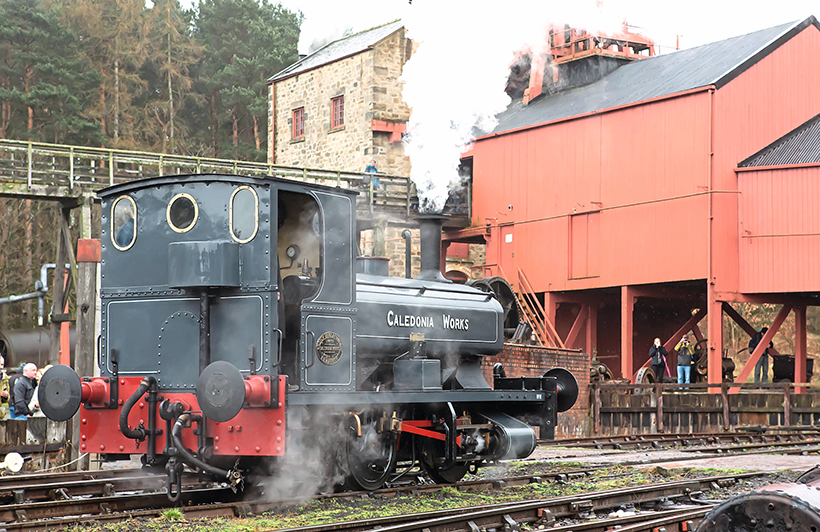
Heading towards the colliery was 1910 Barclay No. 1219 Caledonia Works which was visiting Beamish for an extended stay following the steam gala, thanks to the Pontypool & Blaenavon Railway.
As well as on the roads, there was some steam in action on the railways, especially around the colliery. Starting with a couple of standard-gauge locomotives, shunting some coal cauldrons was 1910 Barclay 0-4-0ST locomotive Caledonia Works, that was delivered new to Stewart & Lloyd Ltd at their Clydedale Works in Mossend, near Motherwell. The locomotive was restored on the West Somerset Railway and returned to steam in early 2016. It then spent some time on the Pontypool & Blaenavon Railway, and was visiting Beamish for an extended stay thanks to that railway.
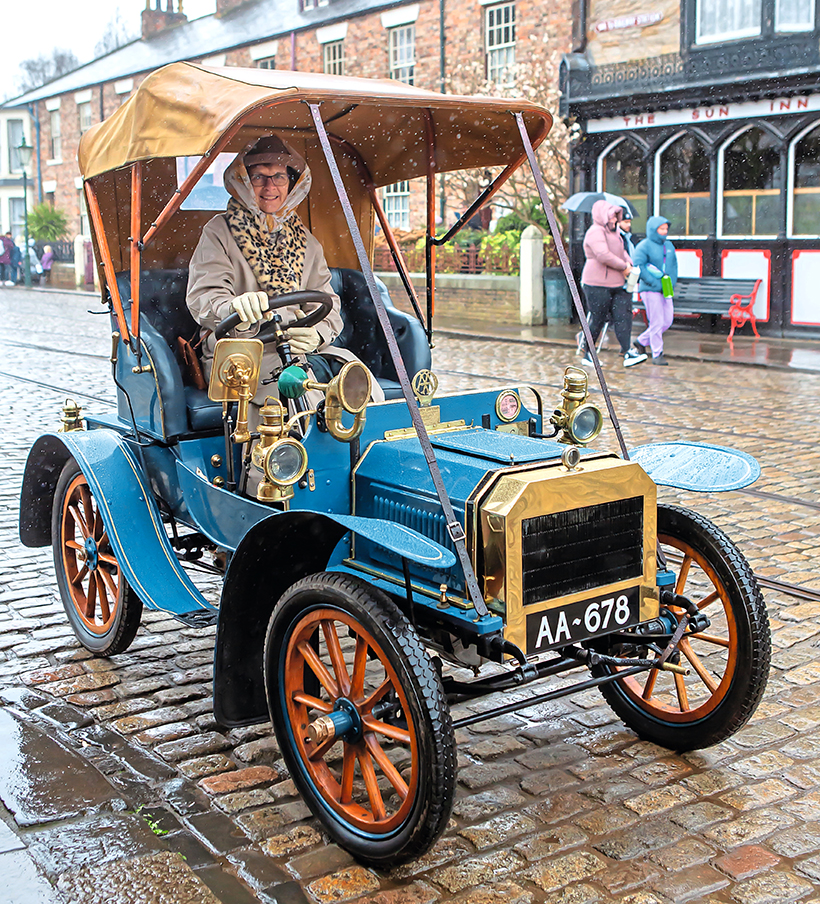
In the 1900s town at Beamish was this 1904 Humberette 6½hp car which was built at Beeston. Owned by Richard and Linda Lancaster, it’s seen with Linda at the controls.
Somewhat older was an 1871 Head Wrightson standard Type 1 locomotive that was built for the Dorking Greystone Lime Company for use at Betchworth Quarry. After its working days were over it lay in a derelict condition, before being purchased by Head Wrightson with apprentices restoring the engine to what it was thought to have looked like. It passed to Beamish Museum in 1962.
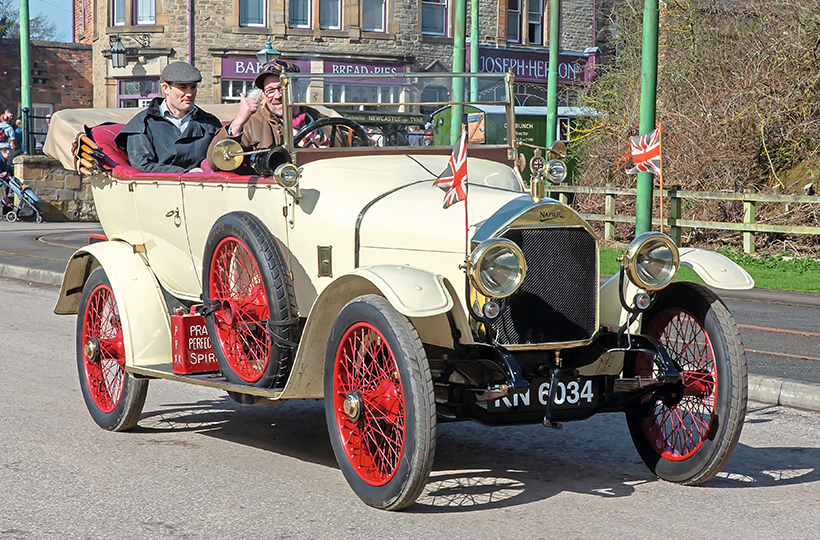
This 1915 Napier 22hp tourer was seen leaving the town area at Beamish. It’s owned by Mark Farrell of Chester.
On a smaller scale, also seen at work were some narrow-gauge locomotives. These included a replica Lewin 0-4-0 engine Samson, the original of which spent all of its working life in a Durham Dales mine until being scrapped in 1904. This replica was completed in 2016, being built by David Young, while also to be seen was 1931 Andrew Barclay No. 1994 Glydor; a standard class E Class 2ft gauge 0-4-0 locomotive. It had a varied life, firstly with Durham County Water Board to work on the extensive Burnhope Dam contract in the early 1930s, and was later used on the Penrhyn Quarry Railway in North Wales. It moved to America in 1965, where it spent most of its time in storage, before being repatriated in 2012 and restored, with the owner allowing it to be used at Beamish due to its County Durham connection.
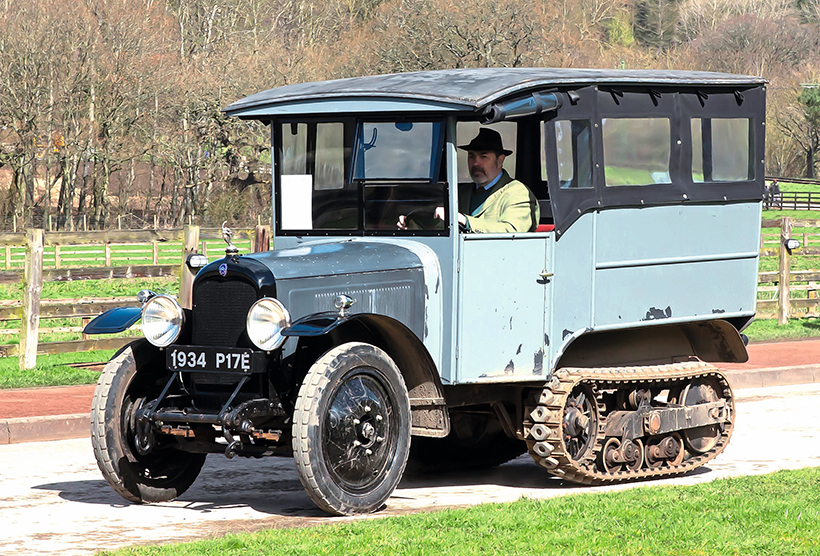
An unusual exhibit was this 1934 Citroen Kegresse P17E that was new in 1934, and was delivered in 1935 to Lord Glendyne of Aultmore House, near Granton-on-Spey, where it was used to take guns up to the grouse moors.
There were a multitude of cars on the roads, too, including a 1903 Stanley steam car which came from the US in the 1980s, passing to Adam Brown of Cambridge around 2021. Beamish’s 1954 Fordson E83W had a more modern feel. It was operated by The Northern Echo in Darlington as fleet No. 54, and was used to deliver newspapers to newsagents in Darlington and across County Durham during the 1950s and ’60s. Seen standing in the 1900s town was a 1904 Humberette 6½hp car which was built at Beeston, and is owned by Richard and Linda Lancaster. It was restored in the 1980s, while Mark Farrell was to be seen with his 22hp petrol-engined 1915 Napier Tourer that came from Belgium in about 2018. Also coming from foreign shores was Philip Smith’s 1928 Renault OS1, which was new in Toulouse and worked in Lyon, before coming to the UK in the 1980s and being slowly restored by Philip.
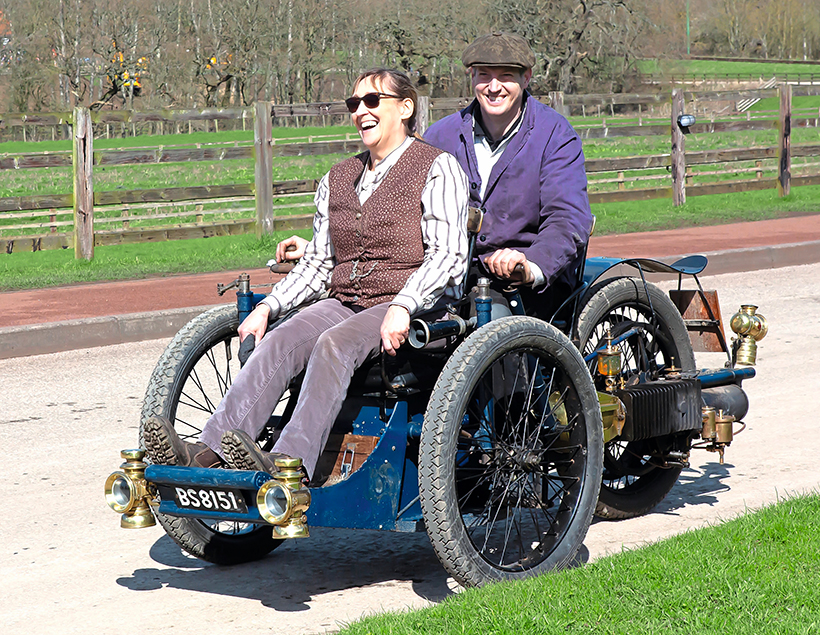
With a top speed of 21mph, David Baldock’s 1897 Leon Bollee 2hp voiturette was driven by David Main, with brave-looking Gill Smith as the passenger
There was also a fine selection of motor bikes on show, representing another great addition to this interesting show in a superb setting.
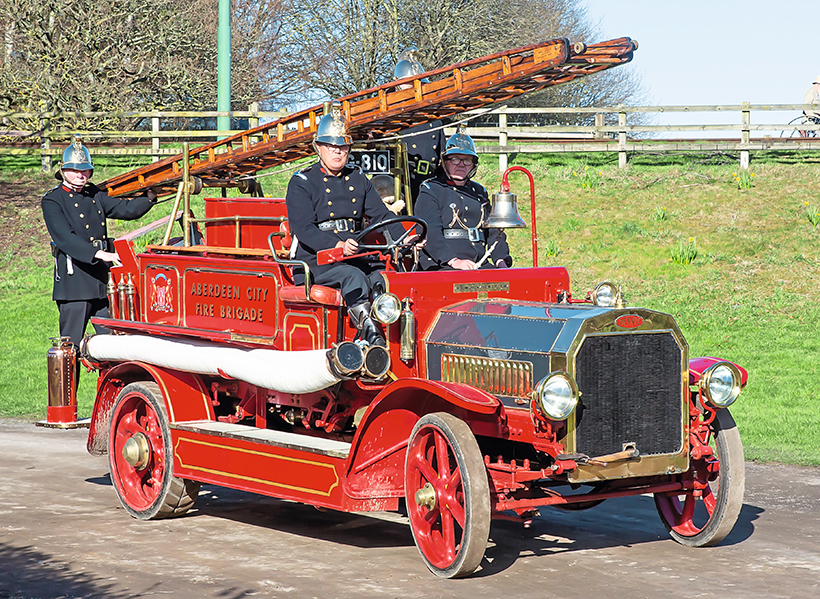
Thankfully not needed during the weekend was this 1915 Dennis Patent Turbine fire engine, which was in the livery of Aberdeen City Fire Service.
This was the first of four, transport-linked galas that Beamish is set to host during 2023. “We’re changing our programme for this year,” Assistant Director – Transport, Industry & Design at Beamish, Paul Jarman said, “With four transport events taking place during the year.”

Looking the part on Beamish’s 1900s town street was this 1903 Oldsmobile that has taken part in the London to Brighton Run.
Further details and the latest news can be found on the museum’s transport blog at: beamishtransportonline.co.uk. More information is also available via the museum’s website at: beamish.org.uk.
This feature comes from the latest issue of Old Glory, and you can get a money-saving subscription to this magazine simply by clicking HERE
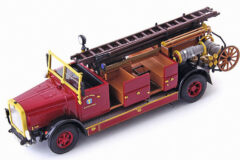
Previous Post
The latest diecast and resin models reviewed

Next Post
The sinking of the German battlecrusier, Scharnhorst



